- Learning time
- 30 minutes
- First play time
- 120 minutes
Cryo
Designed by: Luke Laurie,Tom Jolly
The spaceship has crashed on a cold and inhospitable planet. Survivors – the players – are broken into four factions, each sharing four distinct and just-about-functional parts of the ship: Engineering, Laboratory, Research and Development, and Dispatch. Beneath the planet’s surface are comparatively warm caverns where humans can survive, but! You only have until sundown to act, at which point anyone on the surface will be frozen like a popsicle.
The board shows the crash site and caverns, and players start out with crew pods of their colour in various spaces around the board. The goal is to move them from these spaces to the caverns, and you go about it by assigning drones. You have three drones on your individual player board – your platform – and on your turn you’ll either be assigning a drone out on the board, or recalling them to your platform.
Assigning a drone is a matter of sending it to one of the four parts of the ship and letting it do a job there, such as harvesting resources, or spending them to move crew members to the platform, or from the platform to the caverns. Grabbing resources can be simple: discard a token at the action space and track how much you gained using the markers on your platform. But your platform isn’t just a home for drones and crew – it’s also an operational utility space, where you can process or produce resources. Instead of discarding the resource token, you can place it in one of the recessed spaces on your platform: when drones are recalled, the spaces they land on will trigger the process underneath it: generating more resources, or turning them into energy.
Energy is needed to pay for your trips down the tunnels to reach the cavern, but you need something else too: vehicles. These are represented by cards: everyone starts with two cards but there are ways – using the board, or your platform – to play and get more of them as the game progresses. Cards have multiple functions: they can be used as vehicles, but also upgrades to your platform, played face-down as Missions to be scores at the end of the game (EG a point for each token on your platform) or simply discarded (as a free action) for resources.
Anyone recalling drones turns a leaf in the story of the game: not only is it a way to get more resources (if you have crew members in salvage spots) but it triggers operations on your platform, and an incident token out on the board: the recalling player chooses which one to activate, and they’re either simply helpful – collect X resource – or simply dastardly, as you can blow up a still-functioning part of the ship, taking out any crew pods located there. When the final incident token has been triggered, the sun sets and the game is over: players score points for upgrades, vehicles and crew pods on their platform (x1pt) and crew pods in the caverns (x2pts) any missions, plus – this is critical – bonuses for having majorities in any cavern.
The guru's verdict

-
Take That!
Take That!
It's not the defining characteristic of the game, but the sabotaging of the ship escalates as the game accelerates toward it's conclusion. So players will most likely be losing crew pods to explosions planted by the other players.
-
Fidget Factor!
Fidget Factor!
Moderate to low with familiarity. There can be moments of rejigging plans if an action space you wanted for your drone is no longer accessible, but it's not a game where things grind to a protracted halt: the decision-making is nicely-judged to be key without overwhelming you.
-
Brain Burn!
Brain Burn!
Tactically it's about maximising production, of either the different resources or the crew pod rescue. Strategically there are different paths to explore: cards, platform production, cavern majorities, and scouting can also be fruitful: sending a single crew member to open up a new cavern will bring an easily-gained majority bonus if nobody else can reach you there.
-
Again Again!
Again Again!
Set-up is variable - there are always drone sites out of action due to the crash - and the cards come out randomly, with their distinct vehicle/upgrade/mission combinations to be activated as you wish.

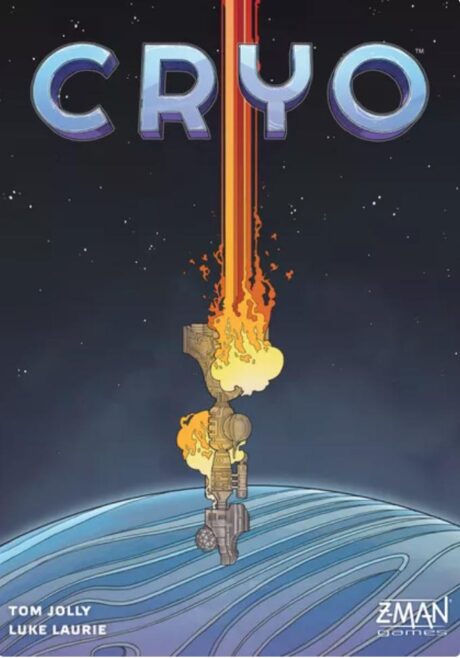


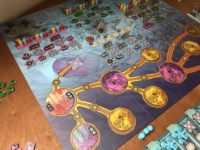
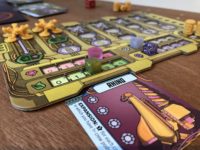
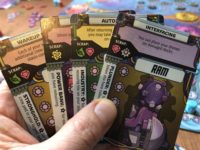




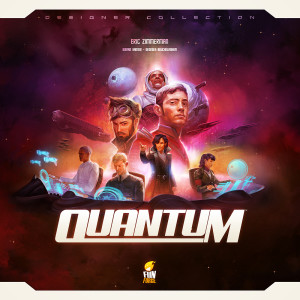
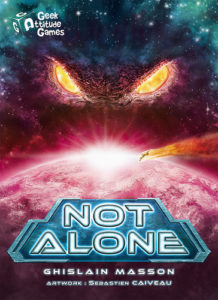
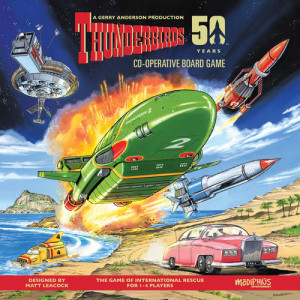
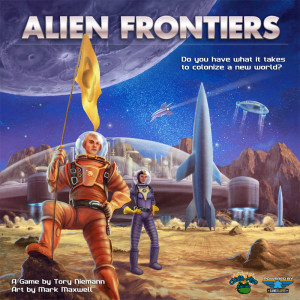

Sam says
I think Cryo is great. It pulls off a narratively solid experience despite the natural abstractions of gamifying it. Lots of [simple_tooltip content='Put a pieces out on the board, receive X from that spot']worker-placement[/simple_tooltip] games can feel a little procedural, but the ticking clock of sundown and the sabotaging of other players feels closer to a story - a tense, and bleak, story, but a story all the same. I also think it's shrewdly judged as a game - you get enough to do within a relatively simple set of rules to feel both rewarded and challenged, and plenty of variation from play to play as to how you go about your rescue mission. The presentation is great too - Cryo could have gone with a dark and gritty look considering the dog-eat-dog nature of it, but I love this slightly old-school aesthetic. A favourite of mine and something of an underrated, semi-brutal gem.